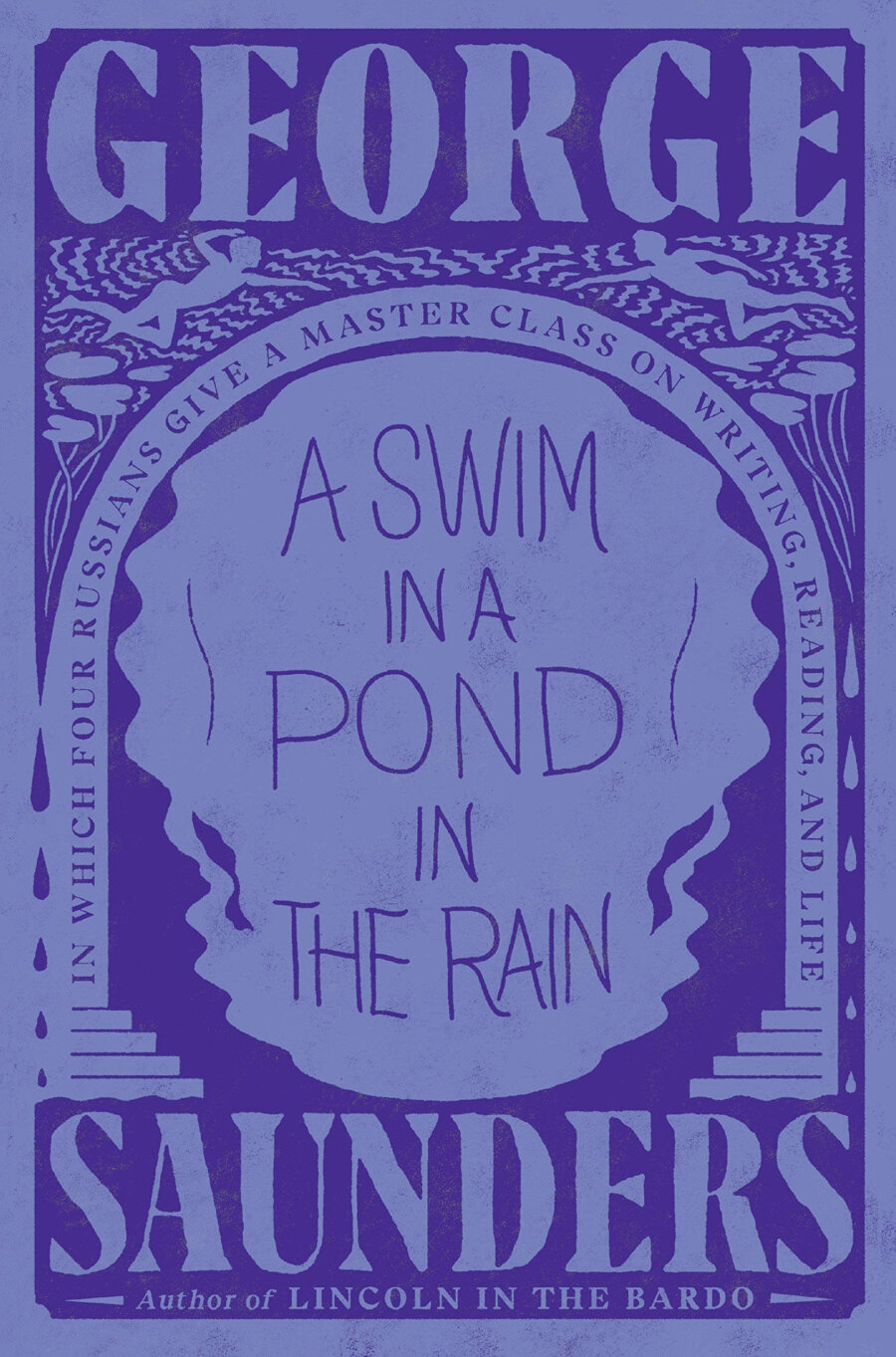A Swim in a Pond in the Rain

A Swim in a Pond in the Rain. In which four Russian give a master class on writing, reading, and life. George Saunders. New York: Random House, 2021.
A Swim in a Pond is the culmination of twenty years of George Saunders teaching a class on the nineteenth-century Russian short story. Breezily written for the public, the book is not an academic analysis of Russian literature but rather an invitation for an invitation for the reader to think about the importance of how to read and write. Russian literature is merely a springboard for the author and reader to have this conversation.
Saunders begins by asking the reader, when reading, to as him- or herself these questions:
1. Look away from the page and summarize for me what you know so far. Try to do it in one or two sentences.
2. What are you curious about?
3. Where do you think the story is headed?
By asking ourselves these questions, we might be able to see certain techniques, like increase specification in a writer’s work or “things I couldn’t help noticing.”
In this book, Saunder provides the short stories of Chekhov, Tolstoy, Gogol, and Turgenev for the reader and then an analysis of them, offering certain techniques of how to interpret it. Saunders repeats this process throughout the book with the different stories, providing deeper insight into the text which we are reading. The result is reflections builds upon reflection, creating a wider perspective of the story.
One of the most intriguing techniques to analyze stories is listing the meaningful action that transpires in the story and then identify the parts of the stories that do not make the list. The question then to ask whether these digressions (those actions not on the list) either enhance or detract from making the story moving and meaningful. Although the answer will vary depending upon the text, this approach provides a useful way for students to see the structure of a story and examine the writer’s craft.
Another approach is looking how the actions correspond to Freytag’s triangle: exposition, rising action, climax, falling action, and resolution. By using the list and the triangle, the reader will be able to identify patterns in the story, whether in relationships, phrases, or actions, thereby revealing how writers cobble together their narratives into a seemingly coherent narrative.
A Swim in a Pond is an enjoyable and helpful read and recommended for those who aspire to be literary writers. Saunders does an excellent job in showing how stories are constructed and how we can read them. It is a wonderful book about reading and writing but, perhaps more importantly, about teaching and learning how to make sense of life.




